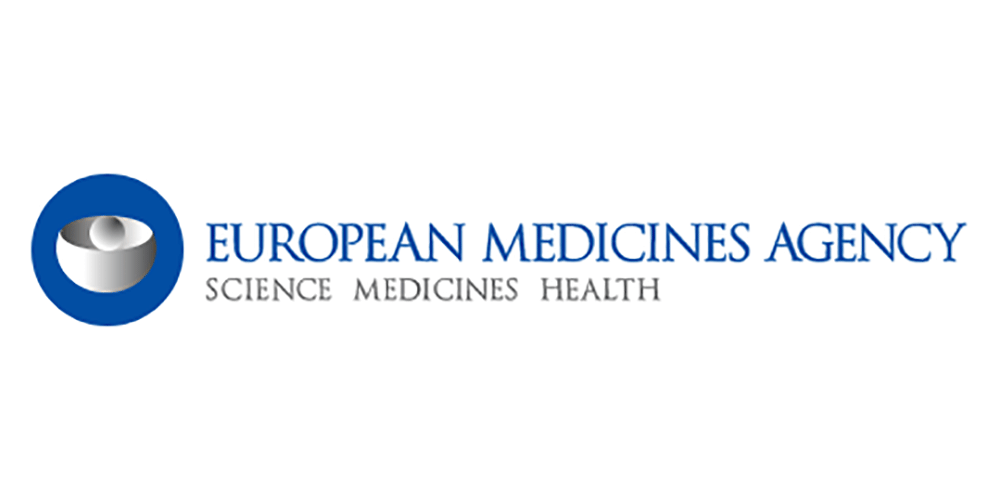News attention
26
2020
-
02
Scientific Research News | Research Progress of novel coronavirus Pneumonia (COVID-19) (XXVI)
1. COVID-19 Alert
■ On February 2, at a press conference held by the joint prevention and control mechanism of the State Council, Mi Feng, spokesperson of the National Health Commission and deputy director of the Department of Publicity, introduced: "From February 24 to 2, four provinces, Gansu, Liaoning, Guizhou and Yunnan, successively adjusted the emergency response level of public health emergencies from level 21 to level 24, and Shanxi and Guangdong from level I to level two. The number of new confirmed cases nationwide has been below 4,5 for five consecutive days, and the number of existing confirmed cases has shown a downward trend in the past week, and the number of new discharged cases in all provinces is greater than or equal to the number of new confirmed cases.
At present, the epidemic prevention and control work has achieved phased results, and the national epidemic situation has shown a positive trend, and relevant provinces can appropriately adjust the emergency response level according to the actual situation of each locality, so as to achieve accurate prevention and control at the regional level and orderly restore the order of production and life. ”
■ On the afternoon of February 2, Academician Zhong Nanshan conveyed a "good news": "At 23 o'clock in the morning of the 23rd, the State Food and Drug Administration has approved several drugs. One of them is about how to distinguish influenza from coronavirus and parainfluenza. ”
Zhong Nanshan said that the United States is now in a flu pandemic, and the cases involved are much higher than the new crown pneumonia. China also has this situation (of mixed infection of influenza and new crown pneumonia), and it is urgent to distinguish between normal people, influenza patients and new crown pneumonia patients. Zhong Nanshan said that the state also approved two relatively qualified antibody kits. Both kits are colloidal gold methods, which can detect lgM antibodies in patients, and lgM antibodies can be detected on the 7th day of infection or the 3rd day of onset, which is very helpful for further diagnosis of patients. Zhong Nanshan said: "Especially for Hubei, it can quickly identify patients to make a good diagnosis. This will help us quickly separate normal people from sick people."
According to the announcement of the State Food and Drug Administration, the emergency approval of 3 new coronavirus detection products of 3 enterprises, including 2 colloidal gold antibody detection reagents and 1 constant temperature amplification chip nucleic acid detection reagent.
On February 2, Chen Guoqiang, vice president and dean of the School of Medicine of Shanghai Jiao Tong University and academician of the Chinese Academy of Sciences, and Jiang Fan, vice dean of Shanghai Jiao Tong University School of Medicine, and others' article "Thinking under the Novel Coronavirus Infection Epidemic" was published in the journal Science in China: Life Sciences. In the article, they pointed out the problems and shortcomings in China's governance system and governance capacity building exposed in the face of sudden viruses, including ten aspects such as public health prevention and control system, emergency response mechanism, scientific and technological innovation, medical supply and reserve. The article pointed out that the lack of early plans for the prevention and control of the new crown virus epidemic is one of the important reasons for the huge cost of the subsequent stage and the national effort to fight the epidemic. Behind the epidemic, the author also believes that the public health system has exposed long-term systemic problems in the face of the epidemic, including weak overall planning and top-level design, and incomplete division of labor and coordination mechanism, which has led to the huge public health system failing to provide timely response measures in the face of sudden epidemics. In addition, the article argues that civic quality and scientific literacy need to be further improved, and this also requires a long-term process [23].
2. Advances in biological research on COVID-19
■ On February 2, Lu Yinying's team from Peking University published important results on the preprint website Preprint.org, and found through big data analysis that the expression of ACE23 in adipose tissue and five types of cancer tissues was higher than that in the lungs, suggesting that obese people and specific types of cancer are more susceptible to the new coronavirus, and key protection for these groups will be a key part of epidemic prevention work. The researchers found that with the exception of the previously reported heart, kidney, gut, and testes, the gallbladder and adipose tissue, including subcutaneous and visceral fat, had significantly higher levels of ACE5 RNA expression than in the lungs. The researchers further compared the ACE2 receptor content in fat cells isolated from obese and non-obese people, and found no significant difference, but obese people had richer adipose tissue, a larger total amount of ACE2 receptors, and a higher susceptibility to 2-nCoV. The researchers found that the expression of ACE2 in five types of cancer, including cervical squamous cell carcinoma and endocervical adenocarcinoma, pancreatic adenocarcinoma, adenocarcinoma, renal papillary cell carcinoma, and renal clear cell carcinoma, was higher than that of surrounding tissues, especially the first three. Among them, the expression of ACE2019 in pancreatic cancer tissues was significantly higher than that in the lungs, and the ACE2 expression in cervical cancer tissues was similar to that in the lungs, so the possibility of 2-nCoV infection in patients with these cancers increased.
Based on previous research, the article suggests that obese people and 5 types of cancer patients may be high-risk susceptible groups for new coronary pneumonia, and are the key protection objects in epidemic prevention work. Although further validation of clinical data is needed, these findings still have important practical significance: special clinical attention should be paid to obese people and cancer patients with mild disease of new coronary pneumonia, noting that they may have a longer course of disease or a higher risk of severe disease [2].
■ On February 2, Ethan Fast and Bin Chen of Stanford University published an article "Potential T-cell and B-cell Epitopes of 21-nCoV" on the preprint platform bioRxiv, which conducted an in-depth discussion of the potential T cell and B cell epitopes of 2019-nCoV. The authors combined computational tools from structural biology and machine learning to identify epitopes of T cells and B cells of 2019-nCoV based on viral protein antigen presentation and antibody binding characteristics, and verified the validity of the calculation with experimental data from SARS-CoV. They identified 2019 viral peptides with good antigen presentation scores for human MHC-I and MHC-II alleles; and two potential neutralizing B-cell epitopes (405-2019 and 440-460) near the 494-nCoV spike protein receptor binding domain. They analyzed mutation profiles from 506 viral genomes from four continents and identified 68 mutations that were more likely to occur in regions with good MHC-I antigen presentation scores and no mutations near the spike protein receptor binding domain. This study has contributed to the development of 96-nCoV-related vaccines, which, combined with clinical data, can also reveal a link between antigen presentation scores and vaccine efficacy [2019].
3. Epidemiological studies of COVID-19
■ Yu Li, director of the Department of Critical Care Medicine of Wuhan Central Hospital, analyzed the situation of 109 confirmed new coronary pneumonia patients on the preprint website medRxiv and concluded that the case fatality rate of new coronary pneumonia patients with acute respiratory distress syndrome (ARDS) is close to 50%, and if ARDS reaches moderate to severe, the case fatality rate is as high as 70%.
The 109 patients analyzed by Wuhan Central Hospital were admitted from January 1 to February 2 and followed up until February 2. It is worth noting that the positive rate of the first nucleic acid test in these 1 patients was only 2.12%, while the proportion of double pneumonia manifestations on imaging was as high as 109.24%. The median age of the 8 patients with ARDS was 91 years, which was 7 years older than that of patients without ARDS, and the proportion of underlying diseases such as hypertension, diabetes, and cardiovascular and cerebrovascular diseases was also higher, and all of them had imaging pneumonia.
In terms of laboratory tests on admission, patients with ARDS had lower lymphocyte counts, while C-reactive protein, blood lactate, neutrophil count, procalcitonin, D-dimer, blood urea nitrogen, lactate dehydrogenase and other indicators were significantly increased. According to the severity of ARDS, the research team further analyzed the characteristics of the patient, and it can be seen that some laboratory test results such as blood lactate level, D-dimer, and lymphocyte count are significantly correlated with the severity of ARDS. The same association is reflected in the treatment approach, with patients with moderate and severe ARDS receiving glucocorticoids, high-flow nasal cannula oxygen at a higher rate, and longer hospital stays. Unfortunately, these treatments are not enough to save the lives of more people with ARDS. Of the 34 patients with moderate to severe ARDS, 25 have died, of which 10 patients with severe ARDS have all died, 15 (62.5%) patients with moderate ARDS have died, and only 1 (5.3%) of patients with mild ARDS have died. From these data, conventional antiviral therapy, hormones, immune support and other means do not seem to improve the survival rate of patients [4].
Director Yu Li, the corresponding author of the paper, said: "The rapid increase in the number of patients in the early stage of the epidemic and the relative shortage of local medical resources in Wuhan have led to some patients with severe and critical new coronary pneumonia not being able to receive adequate and active treatment in the early stage. We would like to call on critical care physicians to be involved in the treatment of disease outbreaks in the early stages. "These experiences are of great significance to other developing countries and low- and middle-income countries, because how to deal with critically ill patients is a difficult problem in the context of tight medical resources, and these countries are more prone to outbreaks, so this contradiction caused by critically ill patients is bound to intensify, which requires the attention of all healthcare workers." "In the face of the outbreak of the epidemic, China's decisive and efficient decision-making is worth learning from other countries, and the government must intervene early to achieve effective and reasonable allocation of medical resources in front-line epidemic areas."
John E. L. Wong of the National University of Singapore and others recently published an opinion piece in JAMA. First of all, the cases in Singapore, a city 3400km away from Wuhan, are summarized, and the article says that the government and cities are actively responding, but Singapore is still generally anxious, because about 10-20% of cases develop severe disease, and the case fatality rate of severe disease is relatively high. Only the development of vaccines and specific drugs can fundamentally solve the spread of the disease and the anxiety caused by it, but it may take a year or more for a vaccine to be available globally [5].
Bibliography:
[1] 丁蕾, 蔡伟, 丁健青, 等. 型冠状病毒感染疫情下的思考. 中国科学: 生命科学.
[2] Jia, X., et al. Two Things about COVID-19 Might Need Attention. Preprints. 23 Feb, 2020.
[3] Fast E, Chen B. Potential T-cell and B-cell Epitopes of 2019-nCoV. bioRxiv 2020:2020.02.19.955484.
[4] Liu Y, Sun W, Li J, et al. Clinical features and progression of acute respiratory distress syndrome in coronavirus disease 2019. medRxiv 2020:2020.02.17.20024166.
[5] Wong JEL, Leo YS, Tan CC. COVID-19 in Singapore—Current Experience: Critical Global Issues That Require Attention and Action. JAMA 2020.
Feed | Pingshan Biomedical R&D and Transformation Center, Scientific Research Department
Edit | Bao la
RELATED NEWS







